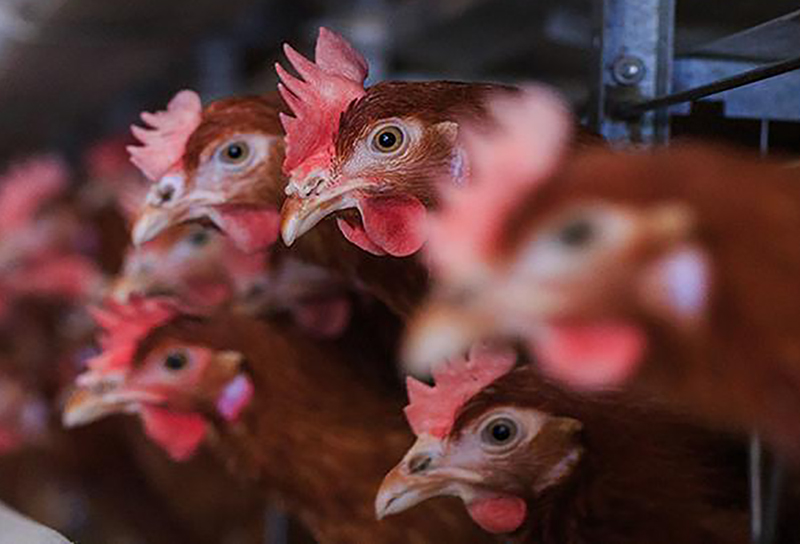
08 May 2018 /
At a moment when lack of funding and technical skills are impeding the growth of poultry farming in Mali and most of West Africa, retired commissioner of police Yaya Sangare has raised ample capital, infrastructure, labor, and other inputs to set up a poultry farm that today supplies the local market in Bamako.

Located on the outskirts of Mali’s capital, Bamako, Yaya’s farm harbors about 4000 chickens, most of which are Wassachiè, a local strain relished by producers and consumers. ‘Wassachiè’ means ‘chicken of satisfaction’ in the Bambara language spoken in most of Mali.
Reducing poverty, and improving food and nutrition security remain major challenges in many West and Central African countries where an estimated 40% of children under five are affected by stunting, 12% suffer from acute malnutrition, and 75% are affected by anemia.
According to the United Nations, Food and Agriculture Organization increased consumption of eggs, and poultry meat brings substantial benefits to humans. But the consumption of poultry products is still a luxury in most parts of Sub Sahara Africa, while there is a high need for animal protein.
Why Wassachiè?
Part of the mandate of the West Africa Agricultural Productivity Program (WAAPP) created in 2008 was to propose innovative solutions to increase agricultural productivity to further cement the food and nutrition security of people in the participating countries.
In Mali, as part of its work to generate and disseminate innovative technologies to improve the livelihoods of communities, WAAPP determined after extensive research that the exceptional genetic properties and improved characteristics of Wassachiè made it a unique breed with the potential to boost the poultry industry while contributing to the nutrition security of Malians.
Compared to other types of chicken, experts argue that Wassachiè is more resistant to diseases, nutritive, taste better, and harshes more eggs. The adult female lays up between 160 to 170 eggs per year compared to 60 to 80 eggs for local breeds.
Fending off competition from the ‘Cheap’ Broiler Chicken
The advantages notwithstanding, Wassachiè’s adoption has not reached the desired levels where ordinary Maliens can afford it and further improve their nutrition security. This is due in part to the relatively high cost of Wassachiè, says the president of an association of Wassachiè producers in Bamako.
While many agree that it is comparatively better in terms of nutritive value and adaptation to the local environment, uptake has not reached the coveted levels.
“Malians are used to broiler chicken. It cost between 1700 to 2000 FCAF (USD 4). But Wassachiè cost averagely 3500 to 3700 FCAF (USD 7).” says Yaya.
Incentivising Wassachiè producers may be the best possible alternative to ensure they remain competitive in a market so far dominated by boiler chicken producers and consumers.
“Despite the cost, we still see Wassachiè as the future of the poultry industry in Mali in a sense it offers a tremendous opportunity to make available highly-nutritive chicken for our population,” according to WAAPP Mali.
“We hope the state could provide us subventions,” says Moussa Maguiraga, President of the Wassachiè Chicken Producers Cooperative of Bamako.
“If the current high demand for Wassachiè tells us anything, it is that consumers value taste over price. Most of the order coming from hotels and restaurants in and around Bamako demand that Yaya supplies them exclusively Wassachiè.
“When the Loft Restaurant in Bamako, for example, places an order for chicken, they insist that it should be Wassachiè and nothing else,” says Mr. Yaya.
“When I inform them that I do not have enough, they insist that I obtain it from other producers,”
Could the Innovation Platform Unlock the Upscaling Challenge?
Recognizing the need for further dissemination to ensure the massive uptake of Wassachiè production, WAAPP Mali is leveraging the potential of innovation platforms to facilitate the uptake of production in major regions such as Koulikoro, Sikasso, and Ségou.
“Innovation platforms brings together actors of a particular value chain. In our case, we are bringing together actors in corn production from which chicken feed is produced as well as women groups since most of those involved in rearing Wassachiè are women,” says Mr. M’pie Bengaly, Head of the WAAPP Innovation Platforms.
Could the Innovation Platforms Solve the Credit and Involvement of Youths and Women?
In Burkina Faso, innovation platforms offered an engagement and discussion opportunity between producers of cowpea, women, and credit unions. Through these platforms, credit unions learned more about the potential of cowpea and the opportunity to invest in it. With this clarity, they could easily loan money to women groups.
In Mali, the innovation platforms may be opportunities for actors to further engage and grow the sector to the expected levels.
“In Kolokani in the Koulikoro region of Mali, groundnut and sorghum seed producers came together with credit union and bankers on one of our innovation platforms. Seeing the seriousness and engagement of the producers, they were linked up with banks and credit unions. If bankers are confident and sense the credibility of the actors, you start to see solutions to the credit and loan challenge.”
Not Much is Needed to Get Started
Retired Yaya Sangare might be close to 1 billion FCFA (USD 2 million) investment today. But he argues that he started off just with a few houses on a relatively small piece of land.
While he acknowledges that growing the business requires considerable funding, land, infrastructure and other inputs, those desiring to start-up should not be discouraged.
Based on the success he has achieved, others come to him for counseling.
“Most of the employers who are women and young people have asked that I pay them in kind. So at the end of the year, they take chicken equivalent to their salaries for the whole year. This allows them to start up their poultry farms,” says Yaya.
“What I have also told others is that you do not necessarily need so much infrastructure and money to get started. With about 200 chicks, land, and the right mind frame, you can get started.”







